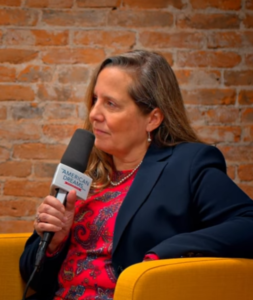Update on Homebuyer’s Credits
Update on Homebuyer’s Credits
Dear Client & Friends:
On November 6, the President signed into law H.R. 3548, the ”Worker, Homeownership, and Business Assistance Act of 2009.” The new law extends and generally liberalizes the tax credit for first-time homebuyers, making it a much more flexible tax-saving tool. It also includes some crackdowns designed to prevent abuse of the credit. These important changes could it make it easier for you or someone in your family to buy a home. And because the changes generally aid buyers and aim to improve residential real estate markets nationwide, they also could make it easier for you or someone in your family to sell a home. This Client Letter fills you in on the details you need to know about the first-time homebuyer credit.
Homebuyer credit basics. Before the new law was enacted, the homebuyer credit was only available for qualifying first-time home purchases after April 8, 2008, and before December 1, 2009. The top credit for homes bought in 2009 is $8,000 ($4,000 for a married individual filing separately) or 10% of the residence’s purchase price, whichever is less. Only the purchase of a main home located in the U.S. qualifies. Vacation homes and rental properties are not eligible. The homebuyer credit reduces one’s tax liability on a dollar-for-dollar basis, and if the credit is more than the tax you owe, the difference is paid to you as a tax refund. For homes bought after Dec. 31, 2008, the homebuyer credit is recaptured (i.e., paid back to the IRS) if a person disposes of the home (or stops using it as a principal residence) within 36 months from the date of purchase
Before the new law, the first-time homebuyer credit phased out for individual taxpayers with modified adjusted gross income (AGI) between $75,000 and $95,000 ($150,000 and $170,000 for joint filers) for the year of purchase.
Your guide to the revised homebuyer credit. The new law makes four important changes to the homebuyer credit:
(1) New lease on life for the homebuyer credit. The homebuyer credit is extended to apply to a principal residence bought before May 1, 2010. The homebuyer credit also applies to a principal residence bought before July 1, 2010 by a person who enters into a written binding contract before May 1, 2010, to close on the purchase of the principal residence before July 1, 2010. In general, a home is considered bought for credit purposes when the closing takes place. So the extra two-months (May and June of 2010) helps buyers who find a home they like but can’t close on it before May 1, 2010. They can go to contract on the home before May 1, 2010, close on it before July 1, 2010, and get the homebuyer credit (if they otherwise qualify). Note that certain service members on qualified official extended duty service outside of the U.S. get an extra year to buy a qualifying home and get the credit; they also can avoid the recapture rules under certain circumstances.
(2) The homebuyer credit may be claimed by existing homeowners who are “long-time residents.” For purchases after November 6, 2009, you can claim the homebuyer credit if you (and, if married, your spouse) maintained the same principal residence for any 5-consecutive year period during the 8-years ending on the date that you buy the subsequent principal residence. For example, if you and your spouse are empty nesters who have lived in your suburban home for the past ten years, you are potentially eligible for the credit if you “move down” and buy a smaller townhome. There’s no requirement for your current home to be sold in order to qualify for a homebuyer credit on the replacement principal residence. Thus, the replacement residence can be bought to beat the new deadlines (explained above) before the old home is sold. For that matter, you can hold on to your prior principal residence in the hope of achieving a better selling price later on.
The maximum allowable homebuyer credit for qualifying existing homeowners is $6,500 ($3,250 for a married individual filing separately), or 10% of the purchase price of the subsequent principal residence, whichever is less.
(3) The homebuyer credit is available to higher income taxpayers. For purchases after November 6, 2009, the homebuyer credit phases out over much higher modified AGI levels, making the credit available to a much bigger pool of buyers. For individuals, the phaseout range is between $125,000 and $145,000, and for those filing a joint return, it’s between $225,000 and $245,000.
(4) There’s a new home-price limit for the homebuyer credit. For purchases after Nov. 6, 2009, the homebuyer credit cannot be claimed for a home if its purchase price exceeds $800,000. It’s important to note that there is no phaseout mechanism. A purchase price that exceeds the $800,000 threshold by even a single dollar will cause the loss of the entire credit.
The new purchase price limitation applies whether you are buying a first-time principal residence or are a qualifying existing homeowner purchasing a replacement principal residence.
Other homebuyer credit changes. The new law includes a number of new anti-abuse rules to prevent taxpayers from claiming the homebuyer credit even though they don’t qualify for it. The most important of these are as follows:
… Beginning with the 2010 tax return, the homebuyer credit can’t be claimed unless the taxpayer attaches to the return a properly executed copy of the settlement statement used to complete the purchase of the qualifying residence.
… For purchases after Nov. 6, 2009, the homebuyer credit can’t be claimed unless the taxpayer has attained 18 years of age as of the date of purchase (a married person is treated as meeting the age requirement if he or his spouse meets the age requirement).
… For purchases after Nov. 6, 2009, the homebuyer credit can’t be claimed by a taxpayer if he can be claimed as a dependent by another taxpayer for the tax year of purchase. It also can’t be claimed for a home bought from a person related to the buyer or the spouse of the buyer, if married.
… Beginning with 2009 returns, the new law makes it easier for the IRS to go after questionable homebuyer credit claims without initiating a full-scale audit.
What hasn’t changed. The tax law still gives you the extraordinary opportunity to get your hands on homebuyer credit cash without waiting to file your tax return for the year in which you buy the qualifying principal residence. Thus, if you buy a qualifying principal residence in 2009 you can treat the purchase as having taken place this past December 31, file an amended return for 2008 claiming the credit for that year, and get your homebuyer credit cash relatively quickly via a tax refund. Similarly, you can treat a qualifying principal residence bought in 2010 (before the new deadlines) as having taken place on December 31, 2009, and file an original or amended return for 2009 claiming the credit for that year.
What also hasn’t changed is the need for getting expert tax advice in negotiating through the twists and turns of the new beefed-up homebuyer credit. Please call us today for details on how the homebuyer credit can help you or your family members.
Please call us at (510) 797-8661 if you have any questions or comments.
—————————————————————————————————————————————————————————————————————
We hope you found this article about “Update on Homebuyer’s Credits” helpful. If you have questions or need expert tax or family office advice that’s refreshingly objective (we never sell investments), please contact us or visit our Family office page or our website at www.GROCO.com. Unfortunately, we no longer give advice to other tax professionals gratis.
To receive our free newsletter, contact us here.
Subscribe our YouTube Channel for more updates.

Alan Olsen, is the Host of the American Dreams Show and the Managing Partner of GROCO.com. GROCO is a premier family office and tax advisory firm located in the San Francisco Bay area serving clients all over the world.
Alan L. Olsen, CPA, Wikipedia Bio

GROCO.com is a proud sponsor of The American Dreams Show.

The American Dreams show was the brainchild of Alan Olsen, CPA, MBA. It was originally created to fill a specific need; often inexperienced entrepreneurs lacked basic information about raising capital and how to successfully start a business.
Alan sincerely wanted to respond to the many requests from aspiring entrepreneurs asking for the information and introductions they needed. But he had to find a way to help in which his venture capital clients and friends would not mind.
The American Dreams show became the solution, first as a radio show and now with YouTube videos as well. Always respectful of interview guest’s time, he’s able to give access to individuals information and inspiration previously inaccessible to the first-time entrepreneurs who need it most.
They can listen to venture capitalists and successful business people explain first-hand, how they got to where they are, how to start a company, how to overcome challenges, how they see the future evolving, opportunities, work-life balance and so much more..
American Dreams discusses many topics from some of the world’s most successful individuals about their secrets to life’s success. Topics from guest have included:
Creating purpose in life / Building a foundation for their life / Solving problems / Finding fulfillment through philanthropy and service / Becoming self-reliant / Enhancing effective leadership / Balancing family and work…

MyPaths.com (Also sponsored by GROCO) provides free access to content and world-class entrepreneurs, influencers and thought leaders’ personal success stories. To help you find your path in life to true, sustainable success & happiness. It’s mission statement:
In an increasingly complex and difficult world, we hope to help you find your personal path in life and build a strong foundation by learning how others found success and happiness. True and sustainable success and happiness are different for each one of us but possible, often despite significant challenges.
Our mission at MyPaths.com is to provide resources and firsthand accounts of how others found their paths in life, so you can do the same.
How to Make Your Retirement Savings last Longer
How to Make Your Retirement Savings last Longer How’s your retirement nest egg looking these days? Whatever your situation: already living off your retirement savings, still a few years away, or you’re just getting started on that nest egg, planning and saving for retirement is very important. But once you have that nest egg saved…
Want to Keep Your Passport – Pay Your Tax Debt
Want to Keep Your Passport – Pay Your Tax Debt. Are you planning an exciting vacation abroad any time soon, or an important overseas business trip? Before you leave the country, you better make sure you don’t owe any back taxes. The IRS recently reminded taxpayers that if they have a tax debt of greater…
Trust Your Tax Return to the Professionals
A question millions of US citizens annually ask themselves prior to April 15th. Should you DIY or trust your tax return to the professionals? Every year many thousands of modest, honest and hardworking US citizens discover they owe the IRS still more money upon completion of their tax returns. It’s a lousy feeling. Now imagine,…
Dawn LeBlanc – Managing Director at Hartford InsurTech Hub
Dawn is the Managing Director at Hartford InsurTech Hub. She has Diversified expertise across insurance/financial products, innovation, marketing, regulatory, actuarial, operations, distribution and technology. Prior to joining Hartford InsurTech Hub she was the Vice President Business Solutions at Prudential Financial. Dawn attended Central Connecticut State UniversityWhere she received her Bachelor’s in Science in Mathematics/Actuarial




